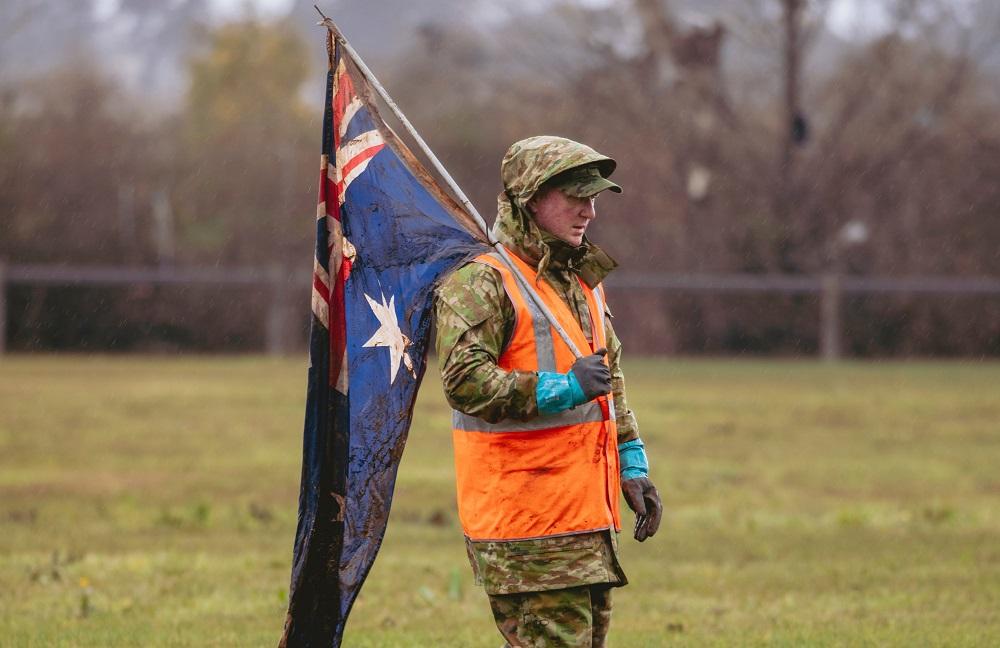
Fixing issues at the expense of positioning Australia for the future is likely to be a theme of the 2022–23 federal budget to be released later this month. It’s a case of focusing on the pressures of today often at the expense of longer term opportunities. The growing list of government reviews, including the royal commission into the ‘Robodebt’ scheme, the defence strategic review and the review of Covid-19 vaccine deals, reinforces a fixation with looking at the past through the rear-view mirror to find answers for the future.
It is an understatement to say that we are living in a complex world. The interconnectedness of everything we do and the speed at which we’re operating add to the complexity. The Covid pandemic and the floods across the nation as we face another La Niña year are reminders that stressing a complex system at one point can create unexpected and unintended consequences in other areas—economic, social and defence.
The national security significance of northern Australia has been well argued for in the context of its contribution to food supply, agriculture and sovereign capability. Not so for national prosperity. The north has infrastructure that’s not fit for purpose and its fragile communities will continue to be challenged by the increased frequency and severity of extreme weather events.
The information age ensures that an overabundance of data is available on any specific problem or mission. However, future-focused strategy requires more than mitigating failure or risk and could even require accepting inevitability.
Recently, I was reminded of a 2008 ASPI paper, A new agenda for national security, in which national security expert Carl Ungerer posited that national policy has two key elements: national prosperity, encompassing social policy, economic policy and environmental or climate change policy; and national security, encompassing homeland security and strategic policy.
Ungerer breaks the elements down further and positions economic security, energy security, health security and natural disasters under social, economic and climate policy. Unsurprisingly ‘homeland security’ includes transnational crime, counterterrorism and intelligence and security as well as emergency response and border security. Under strategic policy, he placed defence and international policy, including diplomacy, multilateral institutions and development assistance.
The last and key aspect of Ungerer’s model was that when these elements combine, they enable the achievement of national resilience.
In many ways, this framing isn’t surprising on the national security side, but to someone who has spent a considerable part of their career in ‘other government’, the national prosperity components seem light-on.
Nevertheless, Ungerer’s central thinking endures with this statement:
Above all, national security policy must be tethered to core national interests—in our case the security and economic prosperity of the Australian people. Our security interests are closely tied to both regional and global developments. And anything that narrows our strategic choices or limits our policy options is a potential threat to national security.
More than 14 years later, it’s interesting to reflect on Ungerer’s framing, particularly in the light of the changes Australia has seen in recent years. There’s a growing understanding of the interconnectedness between strategic policy and wider government, community and industry challenges and opportunities.
After all, it’s one of the reasons ASPI established the Northern Australia Strategic Policy Centre, and why governments and industry in the north are acutely aware of and focused on our uncertain strategic environment.
The reality is that most of us are comfortable handling one priority at a time, prioritising, reprioritising and deprioritising as we go. It’s a process of simplifying that often means that the most difficult, most challenging and most distant problems don’t get addressed—at least not until they become urgent. Regional communities in Australia are increasingly aware of the implications of avoidance and neglect.
Despite the reinvigorated interest in systems thinking, the public sector’s focus continues to be solving yesterday’s problem and preferably via a mechanism that involves lots of emphasis on discussion often at the expense of resolution. One could argue that all the key departments and interests are in the room, so the outcome will be achieved. But even then, it becomes a process of oversimplification.
The 2020 defence strategic update articulated the objective of growing the Australian Defence Force’s ‘self-reliance for delivering deterrent effects’, which in ‘some areas’ requires ‘sovereign industrial capability’. Defence also committed to ‘work closely with industry and other government agencies’, including through alignment with broader government initiatives.
Further amplification of this theme is in the terms of reference for the defence strategic review. One task required of the independent leads is to ‘outline the future strategic challenges facing Australia, which may require an Australian Defence Force operational response’. However, the review shouldn’t focus solely on the ADF and the capability it needs. This aspect will perhaps be overshadowed by another review task: to ‘identify and prioritise the estate, infrastructure, disposition, logistics and security investments required to provide Australia with the Defence force posture required by 2032–33’.
To deliver on the terms of reference, the independent leads must adopt a broad, whole-of-nation view. All levels of government, industry and the community have a role and a unique contribution to make. To optimise the value of these contributions, Defence should articulate the strategic effect required, which in turn will create a more collaborative operating environment and foster engagement around which wider government, industry and communities can rally.
This is a whole-of-nation challenge—one in which those in northern Australia have an intensely personal interest. We must remind ourselves of Ungerer’s framing and recognise that national resilience is achieved through equal focus on national prosperity and national security. I’m not advocating an expansive national security strategy, but it’s time we thought about national security beyond defence capability and crisis response.
In this uncertain strategic environment, we can no longer afford to neglect the social, economic and infrastructure needs of northern communities; their prosperity is as important to national resilience and security as investment in defence.